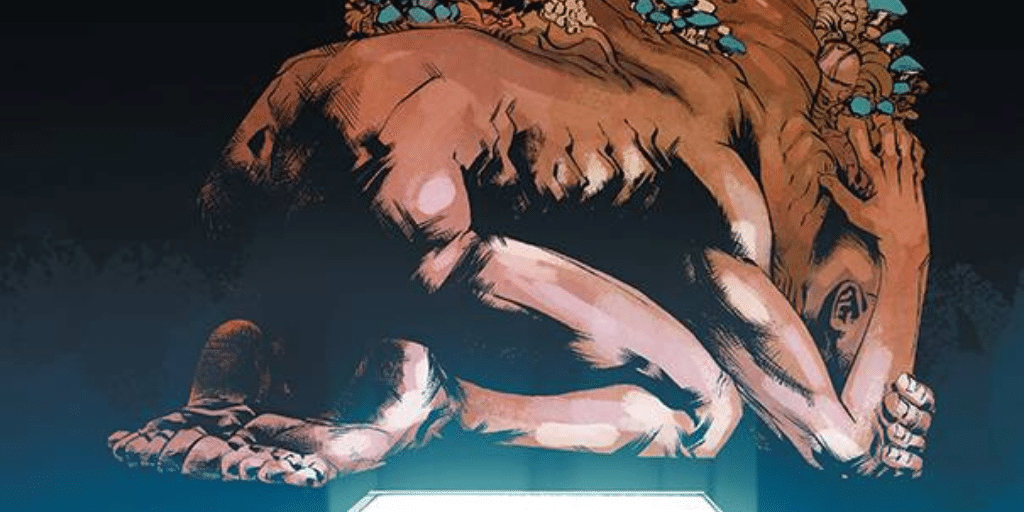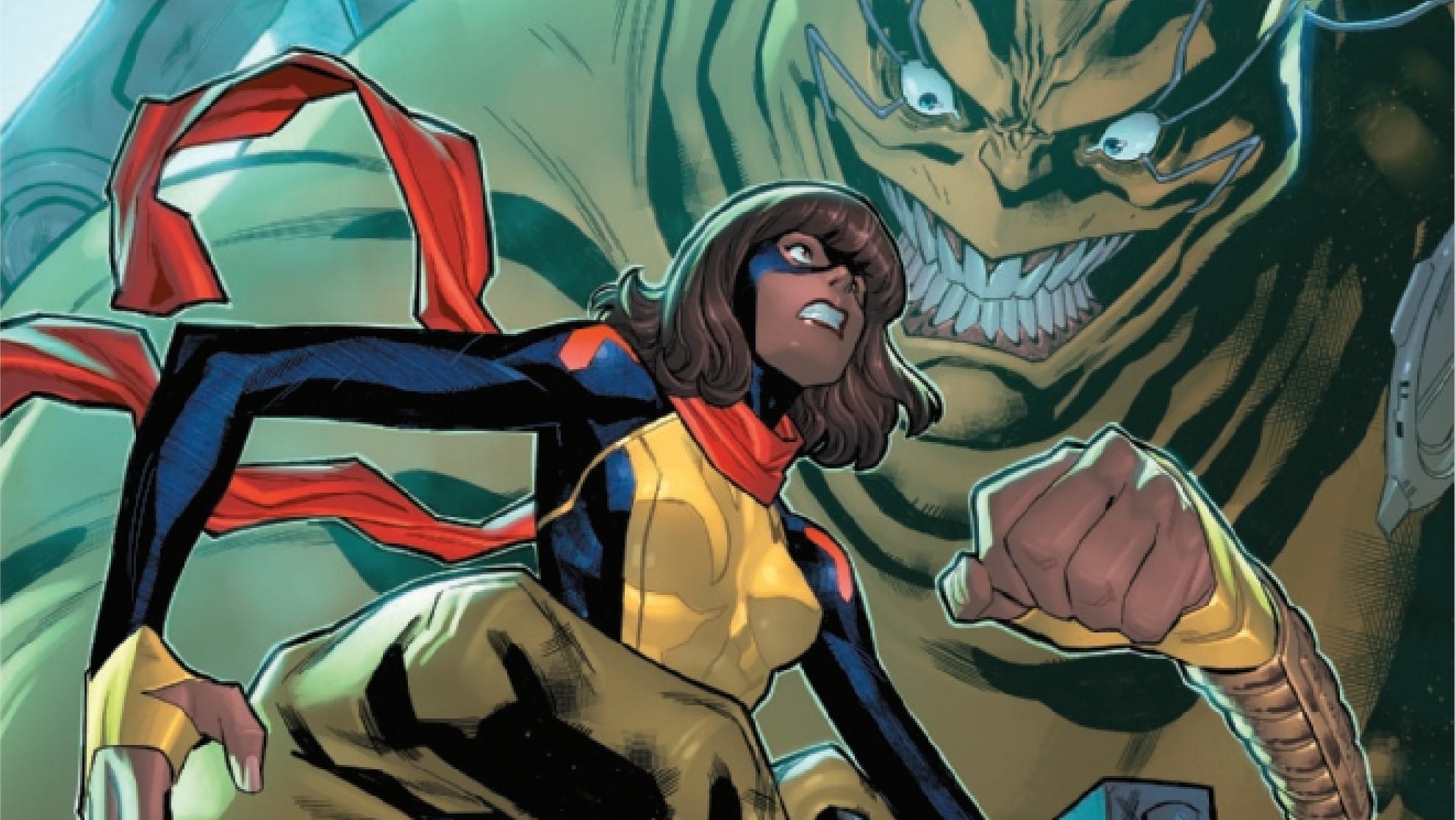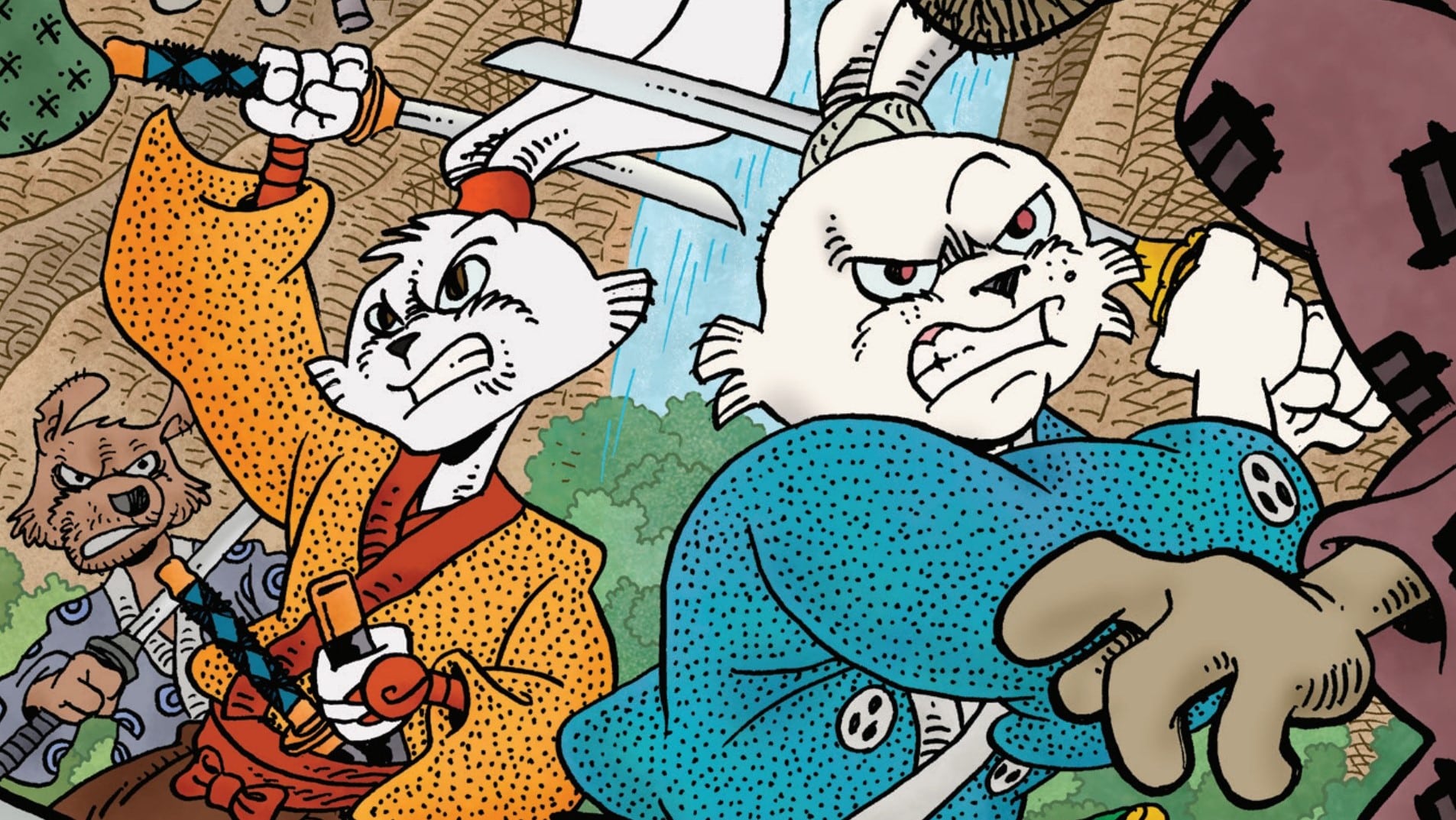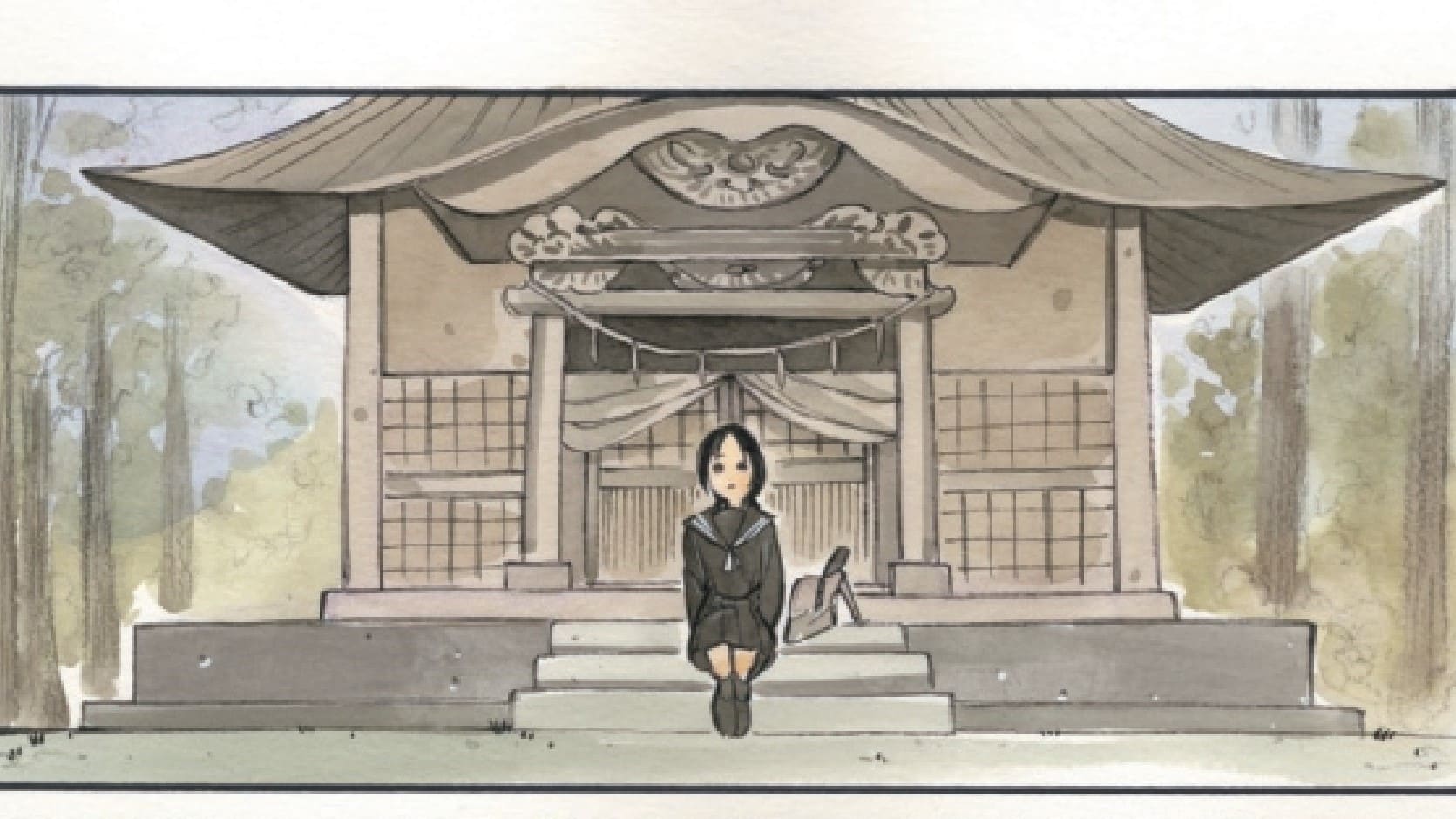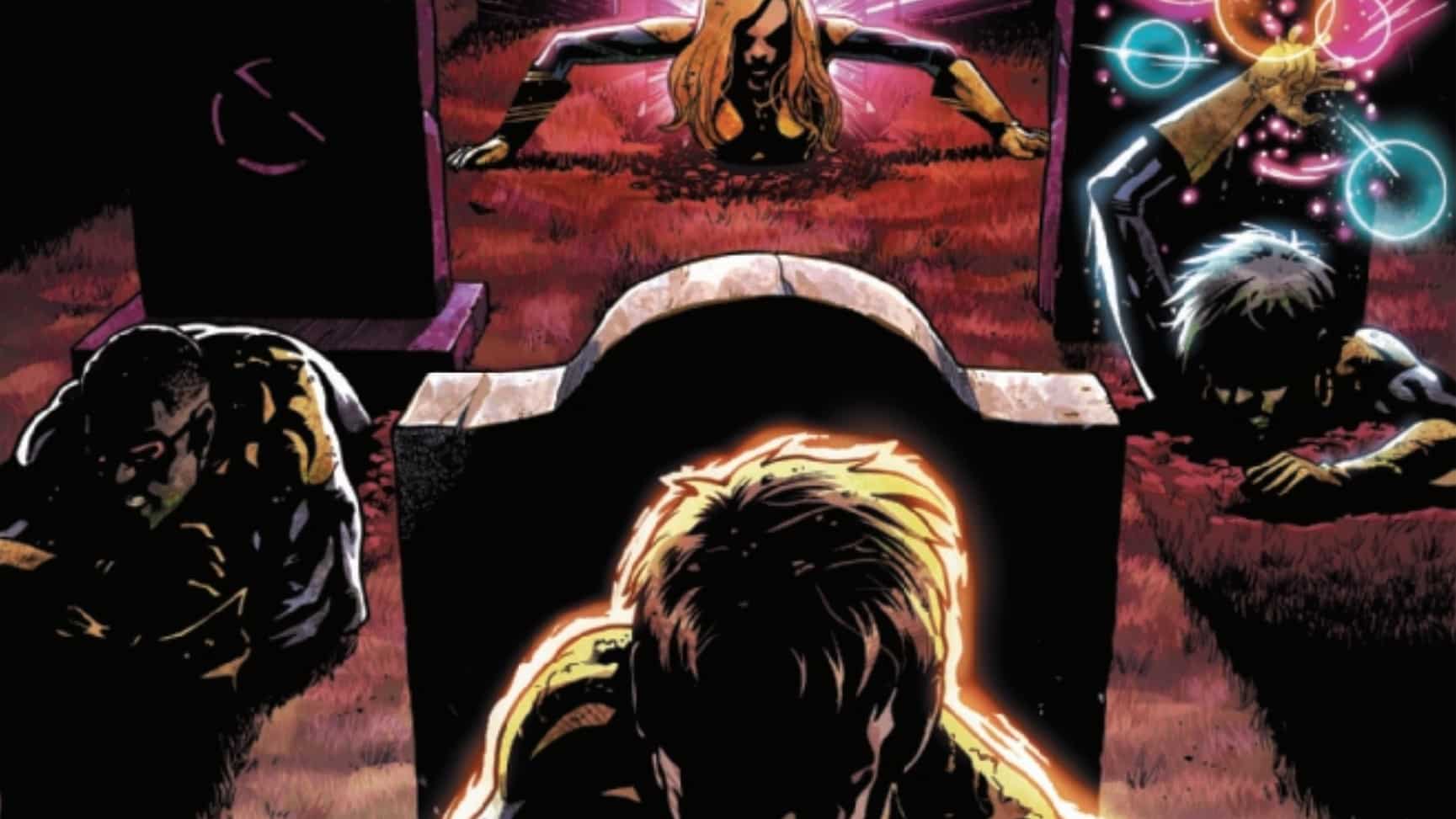As the world reels from the most depraved livestream ever put online, Anne and her co-workers lean into the violence. Horrific appetites are revealed, death is made into spectacle, and the world changes in an instant. Step behind the curtain of online outrage to see the people pulling the strings. Become those who push the limits of what’s acceptable, deny responsibility and make billions in the process. Breathe in I Breathed a Body #2 by Zac Thompson, Andy MacDonald, Triona Farrell and Hassan Otsmane-Elhaou.
Zachary Jenkins: If the first issue of I Breathed a Body was a look into this world, setting up the characters and their motivations, the second is pure escalation. Zac Thompson and Andy MacDonald start having already crossed a line with Mylo’s suicide and spend every moment ratcheting up the depravity. It’s a truly inspired use of narrative elements reinforcing core themes of the story.
RS: The escalation is so sharp that I can’t imagine what the next issue looks like, if it keeps this pace. But what continually shocks me is just how relevant this feels to this exact moment. The revulsion I felt reading this issue? It’s how I feel, too, too often reading the news, scrolling through Twitter or going about my day. I Breathed a Body is disgusting in the way our world is disgusting.
Violence Online

RS: Last time we talked about how the internet has profoundly shaped both of our lives, as, of course, it has millions and millions of people. One reason though I think this series is so resonating with us is that we’re of a similar age, not just with each other, but with the internet as we know it itself; we’re both ’90s kids. We can remember the beginning of the internet, and we can remember it growing up as we grew up. I can remember the first time our household dialed up. I can remember the first time I logged into an MMO. I can remember all the fun, excitement and wonder that arose with each advancement. But Zack, do you remember the first time you saw something that you knew on a visceral level should not have been online? And do you remember the first time you saw someone die?
ZJ: I’ll do you one more, something that disturbs me on a fundamental level, I remember the first time my toddler found something that should not have been online. We fell into a trap, like many parents do, of just needing 10 minutes to ourselves. The YouTube algorithm doesn’t comprehend how illogical children will click through, nor how bad actors will use the platform to spread horrific images and videos. We stepped away, for longer than we should have, and returned to find my son watching some upsetting Russian procedurally generated video with disturbing content. The willingness we had to give a child access to any image or video in existence, just for the tradeoff of a short break? That failing stays with me.
RS: I can’t imagine what it must be like to raise a kid in an online world. And I especially can’t imagine what it will be like if Big Tech Bros get their way and bring about a far less regulated media landscape like the one in this series. But another scary thing to me is just how numb we increasingly are to this. I can remember when the story about Weird Algorithmic Kids YouTube broke, even though I don’t have any kids, because it was the first time in a long time that it felt like the internet had managed to find a new transgression. AIs designed specifically to disturb children were new ground. Even the Paul Brother video (where he filmed a dead body) that Thompson has said influenced a lot of this series isn’t as sharp in my mind, because I had seen far, far worse years before. I’d stumbled upon shock sites, hyperviolent forums, subreddits devoted to showing you people dying.
ZJ: I think the suicide forest video was a bit of a watershed moment not fully because of the contnet, but because it was taking that disturbing internet culture and pushing it into the new mainstream. Also because it happened while Logan Paul was wearing a novelty hat that looked like the three-eyed aliens from Toy Story. Though I’d agree, the fact that people made a machine whose only purpose was to upset children felt more insidious.
Those videos tap into our desire to understand death and the taboo. They are disturbing because they target children who don’t have the vocabulary to articulate what they saw or why it upset them. This book does a phenomenal job of showing how we just can’t look away from some things. How we are transfixed on that which we know we should not see. And how, after repetition, we become dull to this. Something shifts and it takes more and more to put us at unease.
The Grotesque

ZJ: We glossed over MacDonald’s art in our discussion of the previous issue. At the time, we had read this one as well and knew we wanted to dedicate space to the phenomenal work he is doing here. The way Mylo’s desecrated corpse is portrayed is nothing short of breathtaking. It’s horrific, yes, but also beautiful and a testament to the human body. It reminds me of the body horror in the film Annihilation, especially the shrine-like set piece in the pool scene. It’s stomach churning and awe inspiring all at once.
RS: It also very much reminded me of that scene. Both images are grotesque. That’s a word that can mean many things. Oftentimes we use it to just mean ugly or disgusting. When we get into academic senses of the term, it often means ugliness that derives from distortion. But I always find it most useful as a label for the unsettling joining-together of disparate things. Frances Connoly, in The Grotesque in Western Art and Culture: The Image at Play, summarizes the grotesque (while paraphrasing John Ruskin) like this: “The grotesque confounds language and logical sequence as it fuses together disparate realities. […] the grotesque opens up a liminal space, full of ambiguity and contradiction, that requires us to ‘overleap the gaps’ in order to make meaning of it. […] the grotesque places the viewer in an in-between, unresolved space, compelling each individual to take these disparate elements and make meaning out of them.”
The Manticore is horrifying because it is grotesque. The increasingly anthropomorphic fungal creature that we see grow in this issue is grotesque, as is the corpse that feeds the mushrooms in the opening scene. Movies like Evil Dead 2 that join together comedy and horror to the degree that in some scenes you aren’t sure if you should laugh are grotesque. And things that bring together beauty and ugliness are grotesque. I think that feeling you mention, where your stomach drops at the same time you start to feel awe, where part of your brain wants to look away while part of your brain only wants to keep admiring the scene, is powerful and valuable. It takes two emotions and reactions that are normally viscerally passive and, by combining them, makes them something active. We don’t fall into a picture or, jolted, turn away. We make a choice. We try to resolve the tension, and look away or stay on.
ZJ: It’s the flipside to what we talked about above. There’s a part of us as humans that’s drawn to these sorts of images. We know, maybe instinctually, maybe through ingrained societal norms, that we shouldn’t be looking. We still look. We find something in this mess that connects with us on a fundamental level. These are complex emotions for a book to evoke, and MacDonald nails it.
RS: A lot of this issue reminded me of Hannibal (the TV series, not the movie or novel) and its use of the grotesque in ordinary, domestic scenes. The Grotesque Meal is a staple of the series, but it’s inverted here. In Hannibal, utterly horrifying dishes are depicted as incredibly beautiful, incredibly appetizing. We watch the main character prepare human flesh in scenes far more attractive than any cooking show has ever done. The food in Hannibal is more appetizing than in a Studio Ghibli flick. The result is grotesque horror. Here instead we have the most ethical food we can imagine. It’s 3D printed. It’s grown. No one is harmed. And yet the act of preparation, the act of consumption, even just the images of the dishes by themselves all appear utterly disgusting, thanks in large part to the sickly colors of Triona Farrell. And we have to ask why. What is it about our host, our chef, that should disturb us when he makes something?
ZJ: It’s the flipside of Thompson’s earlier book, The Dregs. In that title, with Lonnie Nadler, Eric Zawadzki and Dee Cunniffe, Thompson focuses on a homeless man investigating the disappearance of other homeless folks in his city. The culprit, which the reader sees in the opening pages, is a restaurant catching, killing and preparing the people for fine dining. It’s the most unethical way you could prepare food, and like Hannibal, it’s presented in a beautiful way. We tend to forget that meat is, you know, muscle from a body. Dinner is grotesque, and the team leans into that.
Stonks

ZJ: What makes this whole plot work, in fact, the core motivation of our central character, is the love of money. No one is this story is poor, none of them wants for anything. Even the lowest-status player here has their needs met, however they are willing to compromise their values and the laws of nature for just a few dollars more. While this general damnation of capitalism is a running theme in Thompson’s work, it’s uniquely relevant in regard to social media. As someone who runs a website, I constantly ask myself what we could do for one more view, one more follower, just another Patron. It’s an ecosystem that has been gamified to the point that the serotonin hit of seeing that counter tick up is an addiction. What would you do for just a bit more? Or more importantly, what wouldn’t you do?
RS: I feel so, so much guilt around this subject. Just a month ago I had to pass the hat and sell some things to get by, thanks to an employer’s COVID plan. I logged on and, well, people who know my username (and a few strangers) helped out. It is impossible for me not to feel guilt over this; it feels like a manipulation. Of course that’s nonsense. I’m not a grifter exploiting people, I’m not a YouTube personality that has built a brand off of harming people, I’m not a reactionary artist hopping onto indiegogo to crowdfund a 10-page alt-right comic book for 80 bucks a pop. I’m just a grad student teacher who writes about comic books online.
We’re both incredibly self-reflective here; we’ve been shaped into being self-reflective about money by our society. In this story we see, I think quite accurately, that those who are actually manipulating people, that those who really would do anything to get their counters to tick up, that these people don’t feel anything at all about this. One of the most chilling scenes in this issue doesn’t concern the desecration of a corpse, but a group of investors sitting around a table talking about that desecration. There’s a line that immediately burned itself in my brain the first time I read this issue, and I think it’s going to stay in my head alongside such horror classics as “She began to plot the getting of blood.”
The investors all agree that view numbers need to be raised further. And so a father says quite simply, while sipping a glass of wine, of his son’s body, “Feed Mylo’s head to the dogs. But do it out in the yard, where we can all watch.”
ZJ: Obviously, the commodification of life is a theme at play here. We know Mylo was not created through conventional means, we know there is something darker at work. And this, all this, was done for money. The optimist in me likes to think that, no, people are good and would stop things like this over something as silly as money. The realist reads headlines about natural gas companies comparing the devastation, death and suffering in Texas to “hitting the jackpot.”
RS: The other far, far less disturbing recent story that I think is relevant is the $GSE Squeeze, a story about gigantic sums of money and social media. But what I think is most important in that story is the way the apps involved behaved. Things didn’t pan out the way reddit hoped because apps lied to their users. They claimed to be one thing (methods for average people to finally get involved in the stock market and have a shot at security in this world) and turned out to be another (apps that view its users not as their clients but as their products, as people which create information to be sold and exploited). We see the same thing here; the foundational promise of MyCeenet is a lie, and those who control it can exploit its users when they see fit.
ZJ: This is, of course, very spooky, but luckily it’s just science fiction. Anyway I can’t wait to get on Twitter and share this piece with all my friends in hopes that it makes the site some money.
RS: Like, comment, subscribe?
Stray Thoughts
- Rob doesn’t have anything to share from Mushroom Books yet, but he does have one more quote on The Grotesque that might be worth keeping in mind, this time from Bakhtin’s Rabelais and His World, translated by Hélène Iswolsky: “The grotesque body…is a body in the act of becoming. It is never finished, never completed; it is continually built, created, and builds and creates another body […] Thus the artistic logic of the grotesque image ignores the closed, smooth, and impenetrable surface of the body and retains only its excrescences (sprouts, buds) and orifices, only that which leads beyond the body’s limited space or into the body’s depths. Mountains and abysses, such is the relief of the grotesque body or speaking in architectural terms, towers and subterranean passages” (317-18).
- Zack has tried, and failed, to purchase two mushroom shirts since starting to write this piece.

